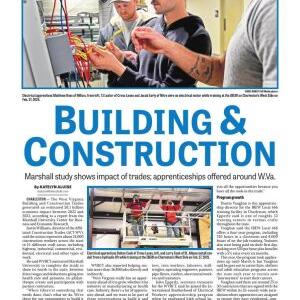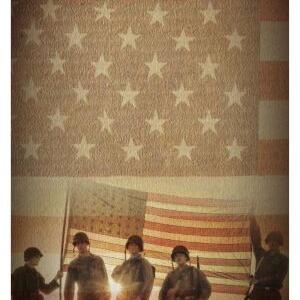When she�����Ƶ�s not working weekends, my wife attends monthly meetings of the DAR, the Daughters of the American Revolution. She�����Ƶ�s into genealogy, has found that her ancestors have been in this country for a very long time and now knows that some of them served the patriot cause in the Revolutionary War.
There is documentary evidence that these people joined the army, but details of what they did and where they served are scarce. We don�����Ƶ�t know, for instance, where they would have been 247 years ago tomorrow, but we can be sure where the bulk of the patriot army was.
That was a dark time for George Washington and his men. The British had just captured Philadelphia, causing the Continental Congress to flee, and the patriots had suffered heavy defeats at the battles of Brandywine and Germantown. The year was coming to an end and the army �����Ƶ� what was left of it �����Ƶ� needed to go into winter quarters. Those soldiers must have made a sorry sight. Washington himself said of them:
�����Ƶ�To see men without clothes to cover their nakedness, without blankets to lay on, without shoes by which their marches might be traced by the blood from their feet, and almost as often without provisions as with; marching through frost and snow and at Christmas taking up their winter quarters within a day�����Ƶ�s march of the enemy, without a house or hut to cover them till they could be built, and submitting to it without a murmur is a mark of patience and obedience which in my opinion can scarce be paralleled.�����Ƶ�
Despite the sorry state of the army, Washington chose to spend the winter in a small community in Pennsylvania. That community was called Valley Forge.
The village of Valley Forge had developed around the Mount Joy Iron Forge, established in 1742 by Quakers, many of them from Wales. In addition to the forge there were mills, farms and houses for the local people. It was an out-of-the-way place between two hills and, during the summer of 1777, the Quarter Master General of the Continental Army had noted it as a place where some of the army�����Ƶ�s supplies could be stored.
Some of the local residents, particularly the forge�����Ƶ�s ironmaster, William Dewees, were not happy with that idea. They feared a concentration of stores in their small hamlet would make it a target for British or Hessian forces. They objected, but the store was established anyway.
The local people�����Ƶ�s concerns were well founded. The British landed in Maryland in August of 1777 and began to maneuver north toward Philadelphia. Word reached the Redcoats about the supplies at Valley Forge and, in mid-September, Gen. Wilhelm von Knyphausen led several hundred German troops in a raid on the village. The patriots tried to remove the stores, but some were captured and carried away while others were destroyed and the buildings they�����Ƶ�d been kept in were burned along with the iron-making forges.
Armies and commanders at that time tended to avoid winter campaigns. The weather and poor roads made movement and supplying the troops difficult, and so they went into winter quarters instead. Washington had to decide where his men were to spend the cold months and several locations were considered. The patriot politicians wanted the army to stay somewhere where they could protect Philadelphia if necessary, and there were even suggestions that they should stage a winter campaign. The patriot force was in no condition to do that, and so Valley Forge was chosen.
The position had some advantages in that its high ground made an attack by the enemy difficult while its open spaces enabled the troops to get training. Against these things were the lack of shelters and supplies. Washington marched 12,000 people in, including soldiers and camp followers, and, between them, they constructed more than 1,500 log huts of varying sizes and shapes, some with floors two feet below ground level to save on logs and provide shelter from the bitter cold.
The lack of clothing, scarce food supplies and disease took its toll on the army. Luckily, the winter wasn�����Ƶ�t too bad, but still men froze, got frost bite or succumbed to illnesses such as flu, pneumonia, typhoid and dysentery. Conditions were not improved by the lack of proper food and sanitation and more than 2,000 of those who came to Valley Forge on Dec. 19 were buried there.
What can you do when your army has been beaten and is starving and unclothed? Washington wrote to Congress, outlining conditions, emphasizing that he feared the troops would drift away in search of sustenance and detailing the low morale. Valley Forge could have been the end of the Continental Army and of the revolution itself but, on Dec. 26, Washington gave his men something they desperately needed.
On that day, he took them across the icy Delaware River and attacked the Hessian garrison of Trenton, New Jersey. The battle was a resounding success, the Germans were routed and the patriots took nearly 900 of them prisoner. It was a much-needed victory and, a week later, they did it again at the battle of Princeton.
Trenton and Princeton were not the biggest battles of the Revolutionary War, but they were a turning point. Morale improved, gradually supplies came into Valley Forge, standardized training was begun and, when the Continental army finally marched out in June of 1778, it was a different entity to the bedraggled, half-starved one that had struggled in.
I, too, have traced my family tree back to before the Revolutionary War. Nowhere in the 18th century have I found even a hint that one of my forbears served as a soldier. I could have missed one, of course but, even if I did he would almost certainly have worn a red coat and would have served King George. That doesn�����Ƶ�t mean I don�����Ƶ�t admire and acknowledge the courage and tenacity of those brave men who endured the hardships at Valley Forge as a first step in ensuring the liberty we all enjoy today.












